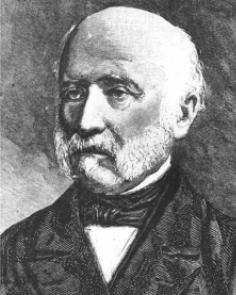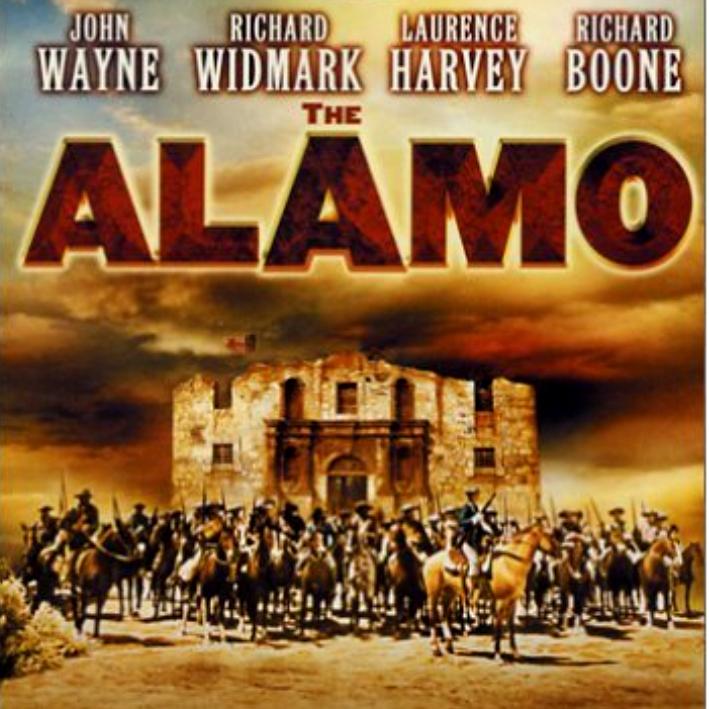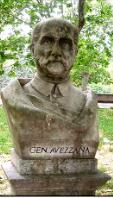|
|
 |
 |
|
|
 |
 |
Giuseppe Avezzana da Chieri (1797-1879) e quelli di Forte Alamo
Volontario nel 1812 nell'esercito napoleonico,
prese parte alle campagne del 1813/14 e nel 1815 entrò nell'esercito sardo con
il grado di luogotenente. Partecipò ai moti del 1821 e sfuggì la pena capitale
andando in esilio. Scelse come terra d'esilio la Spagna dove combattè tra i costituzionali contro il corpo di spedizione della Santa Alleanza comandato dal duca
d'Angouleme, sotto le insegne del quale militava anche Carlo Alberto di Savoia. Caduto prigioniero
accettò di essere esiliato a Nuova
(New - Nouvelle) Orléans in Louisiana (da poco territorio degli Stati Uniti:
nel 1812 Napoleone vende si la Louisiana superiore agli Stati Uniti, ma mantiene
la zona densamente popolata intorno a Nouvelle Orléans. Nel 1815 caduto questo
anche la Louisiana francese si dichiara indipendente rifiutando di riconoscere
la dinastia dei Borboni, che ha recuperato il trono dopo la sconfitta a Waterloo
di Napoleone).

da
Globusetlocus: L’insofferenza lo porta in Messico, nella cittadina di Pueblo
Viejo. Avezzana si mette subito in evidenza per la sua intraprendenza e
preparazione tecnica. Avute notizie circa un progetto governativo mirante a
creare un insediamento urbano ed un porto sul fiume Pànuco, il piemontese riesce
ad ottenere un incarico e si getta con entusiasmo nella progettazione e nella
realizzazione di quella che sarà la città di Tampico. In pochi anni la nuova
città diventerà un vivace centro commerciale e allo stesso Avezzana verrà
richiesto di organizzarne la difesa contro l’esercito spagnolo che, agli ordini
del generale Barradas, tenta la riconquista del Messico. L’italiano,
nell’assedio riesce a dare grande prova di coraggio e di acume strategico,
resistendo eroicamente fino all’arrivo dei rinforzi e adoperandosi poi per la
riedificazione della stessa città. La pace, in un Messico ancora troppo giovane,
rappresenta soltanto delle parentesi e nel 1832 la parola passa ancora una volta
alle armi. Contro il vice presidente Bustamante, reo di aver eliminato il
presidente Guerrero con l’inganno, le forze lealiste insorgono dando battaglia.
A Ciudad Victoria, a San Luis de Potosì, Avezzana farà ancora una volta mostra
della sua eccellente preparazione militare sconfiggendo l’esercito usurpatore e
salendo al grado di generale dei quattro stati d’oriente della Repubblica.
Al signor Comandante
generale D. José Avezzana, dal quartier generale di Orizaba."
"Con ufficio del 13 corrente ho ricevuto il rapporto dell'Ecc.mo signor
Governatore del brillante risultato ottenuto dalla spedizione sotto il comando
della S. V. sulla capitale Ciudad Vittoria. Tanto splendido avvenimento é un
anello di più che abbiamo aggiunto alla formidabile catena, con la quale si ha
da legare il dispotismo orrendo degli usurpatori contro gli uomini liberi.
Godete in cotal trionfo, mentre che io da queste parti gli do tutta la
pubblicità possibile per confusione dei nostri nemici, celebrandolo con le
dimostrazioni proprio della sua importanza. Intanto ho scritto al signor
generale Estevan Montezuma perché vi conferisca il comando dei quattro stati su
cui si estendeva quello del generale Mora. "Antonio Lopez de Santa Anna
meglio noto come Santana*".
*Santana sconfisse l'esercito spagnolo (1829) che doveva riconquistare il Messico. Divenne presidente del Messico nel 1833 con poteri dittatoriali. Abolì la schiavitù nel 1835. In quello stesso anno cercò di impedire con le armi la secessione del Texas, ma, nonostante alcuni successi (fra cui celebre la battaglia di Alamo) dovette nello stesso anno riconoscerne l'indipendenza.
Alamo is a historic structure in the center of San Antonio (Texas).
A famous battle was
fought there from Feb. 23 to March 6, 1836, during the war for Texan
independence. During the winter of 1835-1836, the people of Texas decided to
sever their relations with Mexico because of dissatisfaction with the Mexican
government. To prevent the success of this independence movement, General
Antonio Lopez de Santa Anna, in command of the Mexican Army, approached San
Antonio with his troops.
 Lieutenant Colonel William Barret Travis and a force of
about 150 Texans sought to defend the city. The company included the famous
frontiersmen James Bowie and Davy Crockett. The quick
arrival of the Mexicans took the Texans by surprise. They retreated to the Alamo
to hold off the Mexican force of approximately 4,000 troops. Travis sent out a
plea for help, supposedly declaring, "I shall never surrender or retreat." A
relief party from Gonzales, Tex., passed through the Mexican lines and entered
the Alamo, increasing the Alamo forces to 189 men. Colonel J. W. Fannin left
Goliad, Tex., with most of his 400 men to relieve the Alamo
(pronounced AL uh moh)
,
but he had
equipment trouble on the way and returned to Goliad. The siege of the Alamo
lasted 13 days. By March 5, the garrison could not return Mexican fire because
ammunition was low. This convinced Santa Anna that the fort could be assaulted.
Early the next morning, the Mexicans succeeded in scaling the walls. At the end,
the Texans fought using their rifles as clubs. Some historians believe that a
few defenders, perhaps including Crockett, survived the battle only to be
executed at Santa Anna's orders. Other historians accept the more familiar story
that all the Texans who fought died in the battle. At 8 a.m., the Mexican
general reported his victory to his government. Survivors of the battle included
Susanna Dickinson, the wife of an officer; her baby; her Mexican nurse; and
Colonel Travis' black slave Joe. "Remember the Alamo" became a battle cry. The
determined defense of the Alamo gave General Sam Houston time to gather the
forces he needed to save the independence movement of Texas. He retreated
eastward, pursued by Santa Anna. At San Jacinto, Texas, he turned on the
Mexicans, surprised them during an afternoon siesta, and on April 21, in just 18
minutes, captured or killed most of the Mexican army of over 1,200 men.
Houston's army captured Santa Anna the following day and forced him to sign a
treaty granting Texas its independence.
Lieutenant Colonel William Barret Travis and a force of
about 150 Texans sought to defend the city. The company included the famous
frontiersmen James Bowie and Davy Crockett. The quick
arrival of the Mexicans took the Texans by surprise. They retreated to the Alamo
to hold off the Mexican force of approximately 4,000 troops. Travis sent out a
plea for help, supposedly declaring, "I shall never surrender or retreat." A
relief party from Gonzales, Tex., passed through the Mexican lines and entered
the Alamo, increasing the Alamo forces to 189 men. Colonel J. W. Fannin left
Goliad, Tex., with most of his 400 men to relieve the Alamo
(pronounced AL uh moh)
,
but he had
equipment trouble on the way and returned to Goliad. The siege of the Alamo
lasted 13 days. By March 5, the garrison could not return Mexican fire because
ammunition was low. This convinced Santa Anna that the fort could be assaulted.
Early the next morning, the Mexicans succeeded in scaling the walls. At the end,
the Texans fought using their rifles as clubs. Some historians believe that a
few defenders, perhaps including Crockett, survived the battle only to be
executed at Santa Anna's orders. Other historians accept the more familiar story
that all the Texans who fought died in the battle. At 8 a.m., the Mexican
general reported his victory to his government. Survivors of the battle included
Susanna Dickinson, the wife of an officer; her baby; her Mexican nurse; and
Colonel Travis' black slave Joe. "Remember the Alamo" became a battle cry. The
determined defense of the Alamo gave General Sam Houston time to gather the
forces he needed to save the independence movement of Texas. He retreated
eastward, pursued by Santa Anna. At San Jacinto, Texas, he turned on the
Mexicans, surprised them during an afternoon siesta, and on April 21, in just 18
minutes, captured or killed most of the Mexican army of over 1,200 men.
Houston's army captured Santa Anna the following day and forced him to sign a
treaty granting Texas its independence.
Ma già dal 1834 Avezzana lascia Santana per New York dove si forma una famiglia ed avvia una attività mercantile. Tornato in Italia nel 1848 non ottenne la riammissione nell'esercito. Il 26 febbraio 1849 fu nominato comandante generale della Guardia nazionale di Genova, e dei moti scoppiati un mese dopo fu l'effettivo ispiratore e capo non soltanto militare. Condannato a morte in contumacia, per la seconda volta, raggiunse Roma dove gli fu dato l'incarico di ministro della guerra. Caduta la repubblica romana andò a lavorare a New York con Garibaldi. Nel 1860 ritornò per combattere con le camicie rosse al Volturno meritandosi l'Ordine Militare di Savoia all'assedio di Capua. Nel 1862 fu poi ammesso nell'Esercito Italiano con il grado di Generale nonostante la condanna a morte in contumacia e collocato a riposo dopo la campagna del 1866 (fu ancora con Garibaldi nella campagna del 1866 e l'anno successivo alla battaglia di Mentana). Venne anche eletto deputato per 5 legislature.
Un contributo americano
 AVEZZANA, Giuseppe, soldier, born in Chieri, Piedmont, 19 February 1797. His American career began soon after the restoration of Ferdinand VII. to the Spanish throne, September 1823. Avezzana fought against the restoration, was captured and held for several weeks as a prisoner, and sailed for America on being set free. Prior to this time he served under Napoleon I. from 1813 until the fall of the empire, and then, joining the Sardinian army, found himself in 1815 arrayed against his old leader, who had made his escape from Elba. Wherever there was a chance to fight for liberty, Avezzana was at hand, and hardly was he fairly established on American soil when he found himself called upon to defend the state of Tamaulipas against his old enemies the Spaniards, who invaded the territory under General Barradas in June 1827. He was obliged to retire at first before superior numbers, but soon rallied a force sufficient to overthrow the invaders, and afterward resumed his peaceful vocations. In 1832 a revolution was organized by Santa Anna
(Santana) against the government of President Bustamente, and Avezzana was, as always, ready to lead the revolt. Left in command at Tampico by General Montezuma, who went to stir up the revolutionists elsewhere, he manoeuvred so successfully with a small force that they captured three times their number of government troops at Ciudad Victoria, with artillery and supplies. From this time he gave the enemy no rest, but retrieved the disasters that had befallen Santa Anna and Montezuma, and mainly through his able military leadership the liberal cause triumphed. Avezzana immediately resigned his command, and in 1834 went into business in New York City, where he married an Irish lady and led a quiet mercantile life until the revolution of 1848
fired his patriot blood again, and he promptly responded to the call of Italy. He was absent just a year, and only returned to America after he had fought the Austrians and Sardinians at Genoa, and with a few thousand followers had defended Rome for two months against the allied armies,
100,000 strong !!. Once he sought refuge on board an American and once on board a British man-of-war, and at last, when the cause of freedom was hopelessly crushed, escaped with his usual good luck to America and resumed his mercantile life in New York.
AVEZZANA, Giuseppe, soldier, born in Chieri, Piedmont, 19 February 1797. His American career began soon after the restoration of Ferdinand VII. to the Spanish throne, September 1823. Avezzana fought against the restoration, was captured and held for several weeks as a prisoner, and sailed for America on being set free. Prior to this time he served under Napoleon I. from 1813 until the fall of the empire, and then, joining the Sardinian army, found himself in 1815 arrayed against his old leader, who had made his escape from Elba. Wherever there was a chance to fight for liberty, Avezzana was at hand, and hardly was he fairly established on American soil when he found himself called upon to defend the state of Tamaulipas against his old enemies the Spaniards, who invaded the territory under General Barradas in June 1827. He was obliged to retire at first before superior numbers, but soon rallied a force sufficient to overthrow the invaders, and afterward resumed his peaceful vocations. In 1832 a revolution was organized by Santa Anna
(Santana) against the government of President Bustamente, and Avezzana was, as always, ready to lead the revolt. Left in command at Tampico by General Montezuma, who went to stir up the revolutionists elsewhere, he manoeuvred so successfully with a small force that they captured three times their number of government troops at Ciudad Victoria, with artillery and supplies. From this time he gave the enemy no rest, but retrieved the disasters that had befallen Santa Anna and Montezuma, and mainly through his able military leadership the liberal cause triumphed. Avezzana immediately resigned his command, and in 1834 went into business in New York City, where he married an Irish lady and led a quiet mercantile life until the revolution of 1848
fired his patriot blood again, and he promptly responded to the call of Italy. He was absent just a year, and only returned to America after he had fought the Austrians and Sardinians at Genoa, and with a few thousand followers had defended Rome for two months against the allied armies,
100,000 strong !!. Once he sought refuge on board an American and once on board a British man-of-war, and at last, when the cause of freedom was hopelessly crushed, escaped with his usual good luck to America and resumed his mercantile life in New York.
Torna all'indice di
Carneade